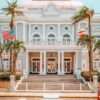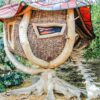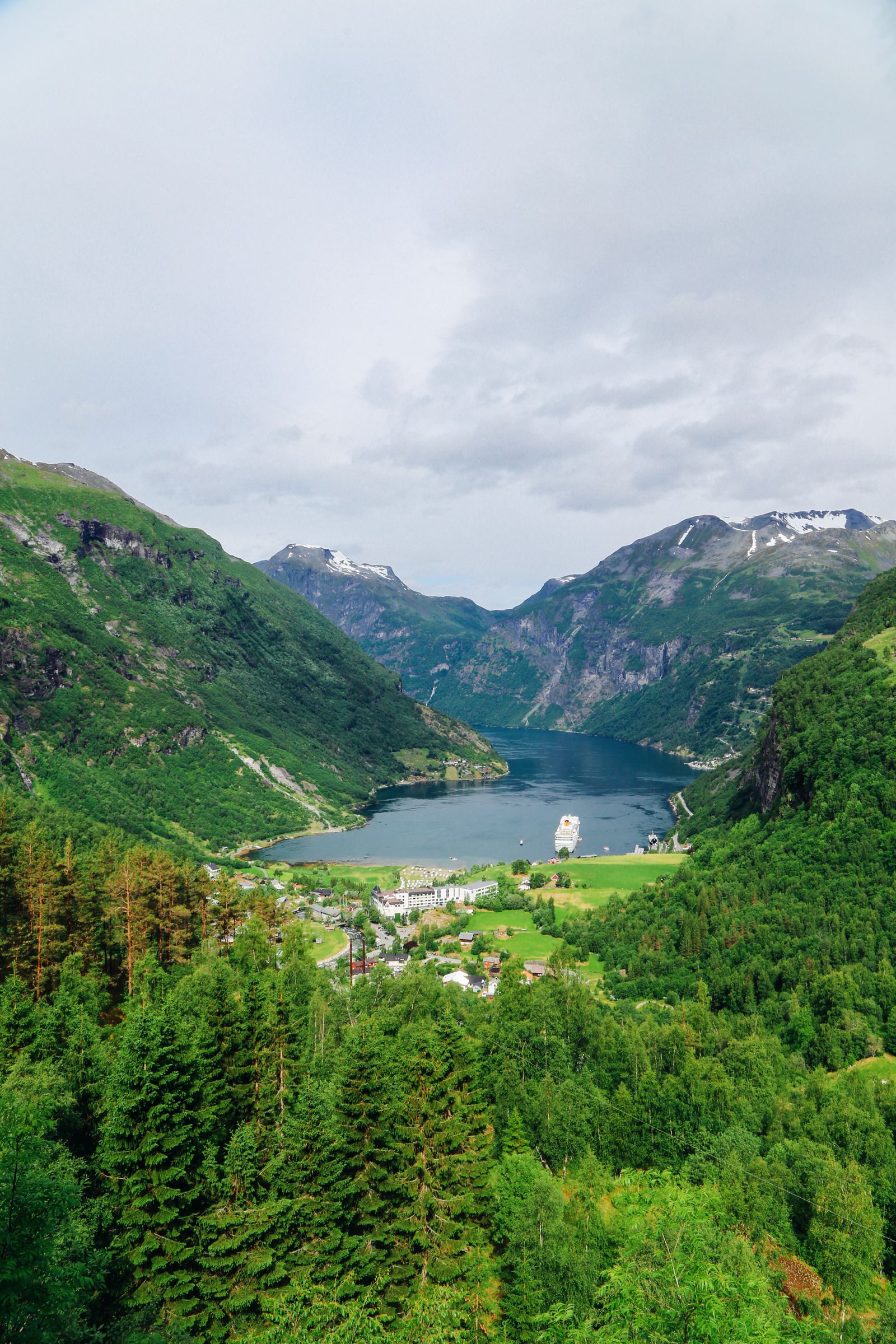As you probably know, we totally love Japan. There’s something about the culture, beautiful cities, incredible islands and of course, lots of yummy Japanese food. After visiting Tokyo (a few times), then heading to Kyushu Island in the south, we knew we wanted to explore some other areas of Japan that we’d yet to explore.
This is exactly where the Ishikawa Prefecture comes in. You see, the islands of Japan are split into different prefectures, with the Ishikawa Prefecture perched on the coast of Honshu island overlooking the Sea of Japan.
Looking from the outside, it’s an area of Japan I’d never really thought about visiting, but that’s what made it even more exciting… the fact that it was a totally new place to explore that I’d hard very little about.
After hopping on the flight from London to Tokyo, we traversed our way across the Tokyo metro (which I still struggle to navigate correctly) to the Shinkansen (bullet train) with about 20-minutes to spare.
Thankfully, there was a conductor that helped us buy the correct tickets, as honestly, I think I’d still be in Tokyo Central Station right now if it wasn’t for him! Honestly, I think it has to do with the number of different barriers, different train companies and different ticket booths that all gets jumbled up to me. Whatever the case, I’m a mess when it comes to organising Tokyo travel, so the train conductor was a total godsend here!
After grabbing our tickets, we hopped onboard the Shinkansen and swooshed straight out of Tokyo. The train journey was around 2-2.5 hours, making it the perfect amount of time for a little kip before we made it to Ishikawa and the capital city, Kanazawa.
Within, what felt like, a blink of an eye, we had arrived in Kanazawa at around midday.
This was one of the perks of taking an overnight flight from London, we technically had an extra day to explore that bit more of Japan.
After throwing our bags into our room, we headed straight out to get our bearings. Now, the first thing that hit me was the heat, wow, it was intense. We’d never visited Japan in the height of Summer before and didn’t really realise how hot it could get. Plus, apparently, whilst we visited, there was something of a heatwave spreading across Japan, which I took as an excuse to munch on anything ice-like to stay cool!
After rambling the streets of Kanazawa, we decided to take a break from the midday heat inside Noh Museum. Before visiting Japan, I hadn’t really heard too much about Noh, which is a form of theatre that dates all the way back to the 14th Century.
Although we weren’t allowed to take pictures inside, we were allowed to try on a traditional Noh outfit and mask (and take a few pics, too). Unlike theatre whereby someone show’s their angry or sad in western culture. Noh performances show emotion through bodily movement, with the mask staying completely the same. This all means that bodily movement has to be very particular and precise when wearing Noh costumes and masks.
Thankfully, we had two lovely helpers from the museum to hand to guide us along the way!
First off, we had to choose a mask. As you can see, there’s a whole range of different masks, each signifying different things. Though, to be honest, I kinda just went with the one I liked the look of most. After choosing our masks, we started to get ready.
Straight away, we realised how important movement and tradition is when wearing Noh costumes. Our helper kept, pretty firmly, pulling and tugging our hands and costumes to make sure everything was the way it was supposed to be.
It kinda felt like we were back in school (and doing lots of things wrong) but she always corrected us with a smile. She was so sweet, we could totally tell she knew what she was doing, so, completely followed her direction. I mean, we would have been stupid not to.
After about 5-minutes of wrapping, bowing, tying and twisting, we were in our costumes. They were actually surprisingly heavy and it was only after trying everything on did I realise how much these Noh costumes cost.
The masks alone can costs thousands of pounds (hundreds of thousands of Yen), with the costumes sometimes costing more.


Best of all, it was all included within the entry the museum and was totally easy to arrange once we arrived.


After cooling down in the museum, we headed back outside to explore a bit more of Kanazawa, and within an instant, something caught my eye! It was the 21st Century Museum of Contemporary Art, which looked uh-mazing.
Even from the outside, there was a heap of contemporary art and installations that instantly made we want to pop in. Without even hesitating, we’d grabbed some tickets for a little later in the day and used the extra free time to see some other local spots.
First up was the Seisonkaku Villa that looked picture-perfect. Now, before heading inside, I have to admit I didn’t know too much about it, it just looked totally gorgeous and didn’t want to miss a good ogle at some historic Japanese homes.
Now, the Seisonkaku Villa is almost like going into a time-warp, as soon as you set foot inside, it feels as though you’ve entered the 19th Century.
The villa itself is totally beautiful and was actually lovingly constructed as retirement and resting villa by Maeda Nariyasu. He was kind of a big deal, especially being the 13th daimyō of the Kaga clan and wanted to make sure his mother had the best home to enjoy.
Still, to this day, you can see her personal collections inside and even see the beautiful gardens and decorated rooms.
You can totally tell this villa was made with love, there are even ornate nail covers and beautiful illustrations hidden in all the nooks and crannies of the rooms. It really felt as though the villa was a little pocket of the city lost in time. So unique to see and totally gorgeous.
That being said, we needed to get back to the twenty-first century, so we hopped on out and headed straight over to the Gardens which are considered some of the most beautiful in Japan.
Kenrokuen Garden is one such place and was once a private garden and one of the Three Great Gardens of Japan. The park itself has been around for centuries and it’s easy to see why when so much care and attention is placed on nature here.
It’s one of the things I love most about Japan, how meticulously crafted and cared for the gardens are, even down to the smallest detail. As we wandered around we found out a little more about the name of the garden itself. I had no idea, but Kenrokuen Garden roughly translates to the ‘garden that combines six’.
Apparently, this has something to do with the six different things that each garden should have within them; seclusion, spaciousness, antiquity, human ingenuity, scenic views and water. And guess what? Kenrokuen has all of these!
It was so beautiful to see, especially as it a great little stop before we visited Kanazawa Castle that is just across the road.
Now, Kanazawa Castle is a partially restored castle that was once the seat of the Maeda Clan.
Nowadays, it’s a relic of the long history of this region and we just had to take a gander.
Over the years, the castle has been reconstructed to include the Kahoku-mon Gate and the Hashizume-mon Gate, too. It’s pretty impressive to see and kind of reminded me of Osaka Castle… well, maybe a little sister of it.


Before we knew it, the time had gotten the best of us and we were already later for the art museum that we decided upon earlier. For some reason, we got totally side-tracked and almost missed our entry.
Thankfully, we made it into the gallery before the last admission. Either that or the staff just took pity on us.
Once inside, we headed for one exhibit that I’d been itching to see, the ‘Swimming Pool ‘ by Leandro Erlich.
Now, it might sound pretty obvious what this art is, but one thing that makes it different is that you can actually head underwater and beneath the water of the pool itself. It was such a cool installation.
And yeah, we might have taken a fair few silly photos to boot! 😉
After trying out all our poses, we strolled around some of the other exhibitions and wandered through the various halls and walkways before hunger beckoned.
In truth, I was kinda surprised I’d lasted all afternoon without a bite to eat, especially so after a long flight from London.


So, with that, we left the gallery (and all its impressive installations) and headed over to Kaiseki restaurant (たけし) that was a short stroll from the hotel.
Truth be told, it’s the kind of place that’s almost a little hidden in the city, especially as its exterior is pretty unobtrusive.
Now, most of the menu was in Japanese, so I can’t claim to tell you every dish we ate, but what I can do is show you!


Best of all, the restaurant is pretty intimate so we got to sit at the counter and watch each of our meal get prepared. My favourite was easily the tuna sashimi, it was so tasty and fresh.




After filling our tummies, we wandered back to the hotel for the next day’s adventure around the Ishikawa prefecture.
If today was anything to go by, we knew we were going to love it.
Read more: the next day exploring the Samurai District of Kanazawa
Finding The Samurai District Of Kanazawa and Hakusan City – Japan
Check Out The Very Best Of Great Britain!











































